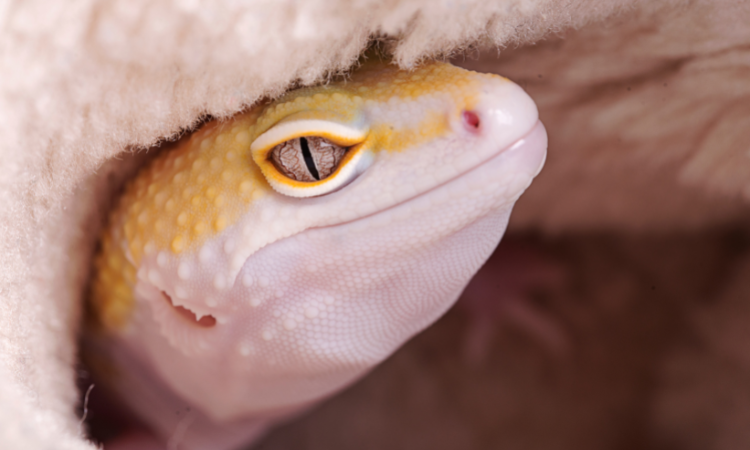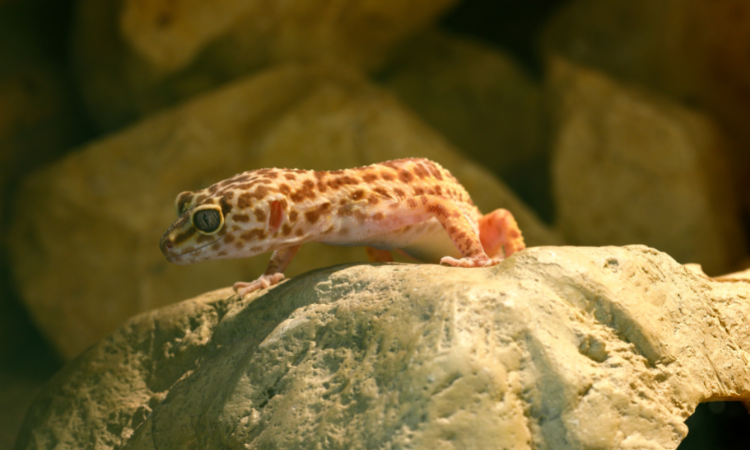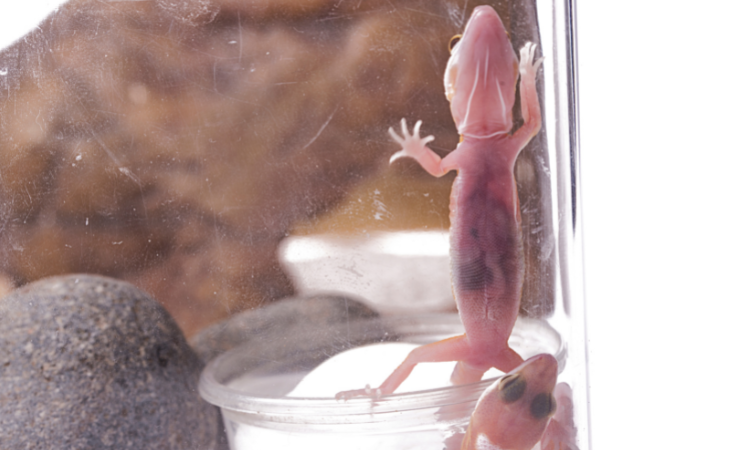Do leopard geckos like humans? That’s a question many potential gecko owners ask, so it’s important to understand the answer. Leopard geckos are often seen as solitary, aloof creatures that don’t show much interest in their human owners – or anyone else, for that matter.
But this isn’t necessarily true! Not only can these fascinating reptiles become attached to their guardians over time; they may even bond with them and look forward to interacting with them on a daily basis.
In this article, we’ll discuss what you need to do in order to create an environment conducive to socializing with your pet leopard gecko and how you can enjoy building a relationship between the two of you for years of companionship.

What are leopard geckos and why do people keep them as pets
Leopard geckos are fascinating creatures that have captured the hearts of many pet enthusiasts worldwide. These charming reptiles, known for their striking appearance, often feature black spots on their yellow or cream colored skin, which resembles the iconic coat of a leopard.
Originating from the deserts and arid regions of the Middle East and South Asia, these geckos are nocturnal creatures that are admired for their adaptability and hardiness. Due to their relatively docile nature and ease of care, leopard geckos have become popular choices among new and experienced reptile keepers alike.
The captivating charisma of these gentle reptiles often sparks curiosity in the minds of individuals, as they seek to form bonds with these exotic pets and witness their unique behaviors firsthand.
Apart from being low maintenance, leopard geckos are also known for their relatively lengthy lifespans, which offer their keepers the opportunity to develop long-lasting connections with their scaly companions.
Understanding leopard gecko behavior and how to handle them
Leopard geckos, with their enchanting appearance and fascinating behavioral traits, have captured the hearts of many reptile enthusiasts. Understanding their behavior is key to properly handling and nurturing these unique creatures.
At first glance, the languid movements of these small, nocturnal lizards might appear simple, but there is more than meets the eye. Keen observation can reveal their intriguing communication methods, such as the tail-wagging or foot-tapping they use to convey different messages.
Moreover, knowing how to handle leopard geckos is essential for a successful bond between owner and pet. Gentleness and patience are key, as these delicate creatures can become stressed or injured if fast, forceful movements are employed.
By gaining a deeper understanding of their behavior and practicing proper handling techniques, you can create an environment where your leopard gecko can thrive, bringing joy and wonder into your world.

Setting up the ideal environment for a leopard gecko
One of the most important aspects to consider is the temperature – leopard geckos thrive in a temperature gradient, with one side of the enclosure being warmer (around 90°F, or 32°C) while the other side is cooler (around 75°F, or 24°C). This allows your gecko to self-regulate its body temperature by moving between the two areas.
Additionally, providing multiple hiding spots such as caves, plants, or wood will not only make your gecko feel secure but will also encourage natural exploration and hunting behaviors. Finally, don’t forget to include a moist hide in your setup – this is essential for shedding time when your gecko will need extra humidity to help ease the process.
With these key elements in place, your leopard gecko’s environment will be a beautiful and functional space for them to thrive.
How to socialize your leopard gecko with you and other family members
Socializing your leopard gecko with you and other family members can be a fascinating and rewarding journey, bringing everyone together to interact with this amazing reptile. The key to establishing a bond with your leopard gecko lies in regular and gentle handling, which allows the creature to become familiar with your touch and to develop trust.
However, patience and understanding should be given utmost importance as it may take a few days or even weeks for your gecko to fully adapt to the newfound human interaction. Equally essential is offering tasty treats during socialization sessions, which will further encourage their engagement and create positive associations with the family members.
With such consistent efforts and a welcoming environment at home, your leopard gecko will become an adorable and trusting part of your family, forging a truly unique connection with each member.
Tips for feeding your leopard gecko and providing proper nutrition
Taking care of a leopard gecko is an exciting and rewarding experience. To ensure that your gecko stays healthy, providing nourishing food for sustenance is essential.
When it comes to feeding your gecko, insects such as crickets and mealworms should be their main form of sustenance. These should be appropriately sized for the gecko and there should always be clean, fresh water available to them.
A nutritious diet with Vitamin D3 dusting on the bugs occasionally is also recommended so they can receive the necessary nutrients they need. Feeding your gecko regularly will give them the energy they need to explore, play or simply rest comfortably!

Discovering signs that your leopard gecko is feeling threatened or stressed
It’s vital for any leopard gecko owner to understand and recognize the signs that their beloved pet is feeling threatened or stressed. After all, these fascinating little creatures rely on us to provide them with a comfortable and caring environment.
Becoming skilled in deciphering their unique body language will ensure that you can cater to their needs and maintain their wellbeing. Some telling signs to look out for include rapid breathing, tail rattling, and adopting a defensive posture, all of which indicate discomfort or agitation.
Their skin may also appear darker due to stress-induced overproduction of melanin. By identifying these tell-tale signs, you can take appropriate action to alleviate stress and create a happy, thriving space for your leopard gecko.
From their vibrant colors to their big personalities, leopard geckos make excellent pets! They’re relatively low-maintenance and thrive in the perfect combination of temperature, light, and humidity. Leopard geckos can be hand-tamed with patience and regular handling (when they’re comfortable).
While many don’t require a large living space, they still need a spacious tank with enough room to accommodate the necessary accessories such as shelves, substrate, bathrooms, water dishes, and other decorations.
Additionally, a well-rounded diet of vegetables and insects is important for proper nutrition. Lastly, it’s also important to recognize signs of stress or overstimulation in these little creatures—that way you can respond accordingly.
All in all, owning a leopard gecko can be an incredibly rewarding experience when done with thoughtfulness and planning.
Related posts:

Hi – I’m Erika, the lead gecko enthusiast here at Geckopedia! I write articles about pet geckos, including what to feed your leopard gecko and how to help your pet gecko live a long, happy life! I graduated with advanced degrees from UC-Berkeley, the University of Southern California (USC) and Indiana University-Bloomington, where I studied Biology and Animal Science. I use my experience to help others learn about gecko care, and I am an advocate for all topics gecko related!
